Matador Network's Blog, page 1047
July 26, 2019
Food that is created from CO₂

It may not fall from the sky just yet, but food can be grown out of thin air. Solar Foods, a Finnish company, is planning to introduce a new protein powder called Solein, made entirely out of CO₂, water, and electricity. CO₂ is extracted from the air using carbon-capture technology then combined with water and nutrients through a natural fermentation process. The powder is a wheat-flour-like product that contains 50 percent protein content, five to 10 percent fat, 20 to 25 percent carbs, and looks and tastes like wheat flour.
According to Think Big, it is slated to be launched in 2021 and soon afterward may start appearing in protein shakes and yogurt. If it proves successful, Solein could feed people from all over the world who otherwise don’t have access to traditional methods of food production.
Solar Foods claims that Solein is “free from agricultural limitations,” and indeed, since it’s produced indoors, it does not rely on arable land, irrigation, or weather of any kind. The idea for Solein originated with NASA, and true to its roots, Solar Foods is already partnering with the European Space Agency to develop foods for off-planet production and consumption.
In the short term, Solar Foods plans to launch the product, begin the safety approval process in the EU, and publish plans for a massive factory capable of producing 500 million meals annually. By 2050, they are ambitiously aiming to provide sustenance to nine billion people. 

More like this: Airport food is actually good now, at least at these US airports
The post New food literally created from thin air could feed billions appeared first on Matador Network.

Best beaches in New Zealand

When you imagine New Zealand, you might think of plunging bungee jumps, bright hobbit doors, and jagged mountain peaks. While the country is known for every kind of inland adventure, sometimes travelers forget that, at its heart, it’s an island nation, meaning the ocean is as much a part of the landscape and experiences as the mountains. From classic coastal scenes to wild shores, New Zealand beaches reveal a whole other side to the country. If you don’t want to spend all of your New Zealand travels lacing up smelly hiking boots, venture to some of these refreshing beaches instead.
Cape Reinga

Photo: Patricia Hofmeester/Shutterstock
The Māori name for Cape Reinga is Te Rerenga Wairua, which means spiritual refuge, and it’s regarded as the place where spirits enter the underworld. It’s located at the northern tip of the North Island, and it’s where you can witness the meeting of the Tasman Sea and the Pacific Ocean, a unique mesh of waters you likely won’t get many chances to see elsewhere. While visitors tend to head straight for the cape, a halt at the surrounding beaches round out a North Island trip.
Make a stop at Tapotupotu Beach, where you can dig your toes in relatively unspoiled sands. This quieter scene is ideal for sunbathing and reading a book. For more action, head to Ninety Mile Beach, a long stretch of dunes popular for bodyboarding in between dips in the sea. In either case, renting your own car is the ideal manner of exploring the depths of this region.
Hahei and Hot Water Beach
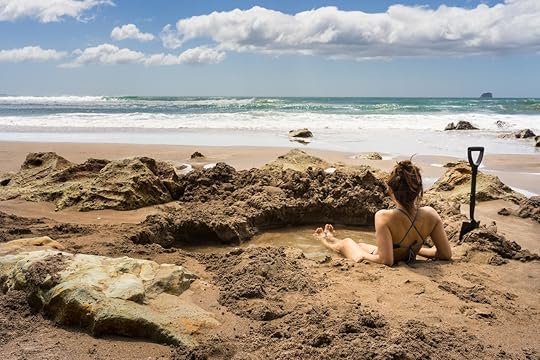
Photo: Naruedom Yaempongsa/Shutterstock
Also on the North Island, yet south of Cape Reinga, the Coromandel Peninsula is well known for its beaches — and Hahei and Hot Water are two that possess unique features. From Hahei Beach, you can access Cathedral Cove, a popular spot for photos. Peer out from under the natural arches of the cove at clear waters rolling over pink sands. When you’ve finished exploring, try snorkeling or simply lounging in your delightful surroundings. You can journey here on a ferry ride from Auckland to Coromandel and then a bus to Hahei.
Just south of Hahei and Cathedral Cove is Hot Water Beach. For trips here, be sure to bring a shovel, and not just for building sandcastles. At low tide, visitors tunnel down until they reach the natural hot springs seeping through the surface. Here, you can laze about in cozy, self-made springs. Just south of Cathedral Cove, this beach is an easy stop en route.
Piha

Photo: ChameleonsEye/Shutterstock
Just under an hour’s drive west of Auckland, itself in the upper portion of the North Island, Piha Beach draws visitors with its unique black sands, chipped away over centuries from volcanic rock. You’re likely to meet some surfers riding Piha’s gnarly waves, or maybe you’ll be cruising alongside them with your own board. When you need a break from getting pummeled by the surf, join the folks reclining in the sand or wander up to Lion Rock, one of the beach’s unique rock formations. At the end of the day, the coal-hued shore, wild blue waves, and cool surroundings make for one striking vista.
Waimarama and Hawke’s Bay
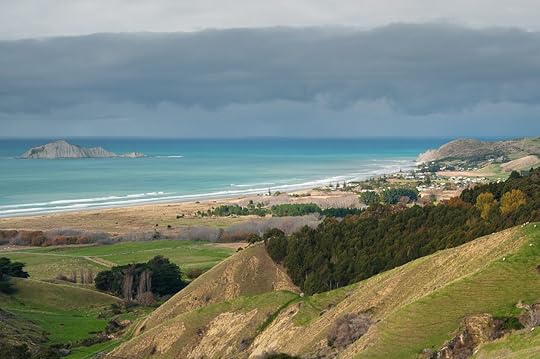
Photo: Weather500/Shutterstock
On the North Island’s east coast, the Hawke’s Bay region perfectly meshes the keys to rest and relaxation: world-class wine and world-class beaches. The beauty of Waimarama beach lies in Hakikino, a former Maori fortress that’s now a historic and educational site. Otherwise, the abundance of beaches in Hawke’s Bay makes the crowds spread out enough for visitors to feel like they’re in seclusion, and you can hop your way up through other dreamy shores, such as Ocean Beach, and several wineries. Road-tripping is the best way to rove this corner of the North Island at your own pace.
Abel Tasman
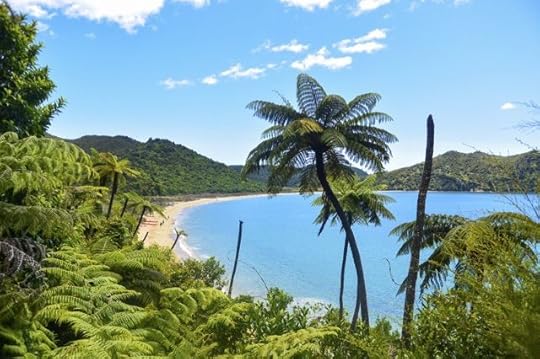
Photo: Guaxinim/Shutterstock
Hopping over Cook Strait to the South Island, head to Abel Tasman National Park in the South Island’s northwestern terrain. This protected area is dotted with beaches and campsites along Tasman Bay, from Observation Bay to Onetahuti and beyond. While it’s New Zealand’s smallest national park, it packs plenty of appeal. Relaxing and taking in iconic sites, like Split Apple Rock, are famous choices among visitors, though you can always go for a walk on nearby trails or kayak in the turquoise bay. Campgrounds are abundant here, allowing you to fully immerse yourself in the wilds of beach life.
Punakaiki and Hokitika
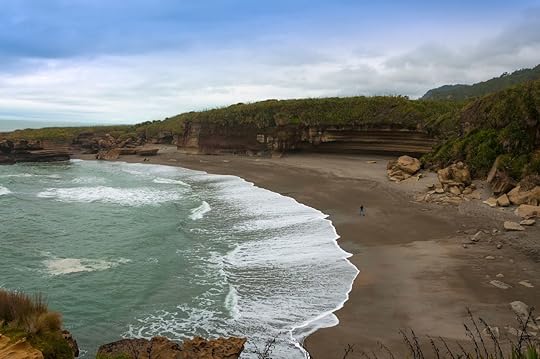
Photo: Piu_Piu/Shutterstock
From Abel Tasman, you can travel down either the west or east coasts of South Island. Travelers bound for Wanaka and Queenstown will take in the craggy coast bordering Tasman Sea in the west, though it’s not too craggy for a break. At Punakaiki Beach, walk along the black sand shores and venture into the cool water. Travelers also tend to visit the nearby Pancake Rocks, neatly stacked formations made for breakfast trays, and the seal colony at Tauranga Bay. A car will be necessary for these excursions, allowing you enough flexibility to discover more beaches down the stretch of coastal wonders.
If a car is a no-go for you, the InterCity bus stops at Hokitika. The beach here won’t be as secluded, but the location is easily accessible and allows you to travel between shore and town at your leisure. When visiting in the summer, look out for the Driftwood and Sand event, where the artistically minded construct sculptures using natural beach materials. Visitors can participate too, and this welcoming attitude is one you’ll encounter all through your coastal tour of New Zealand.
Kaikoura
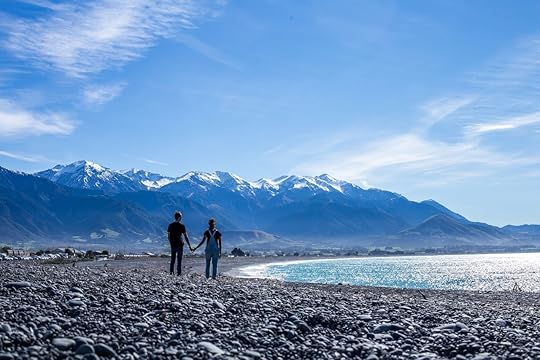
Photo: Bruna Rezende/Shutterstock
The South Island’s eastern shores mirror the western’s blend of peace and activity. Kaikoura is the recommended town for embarking on whale-watching tours, swimming with dolphins, spotting blue penguins, and generally familiarizing yourself with New Zealand sea life. Beach life here is less about relaxing, though you can certainly lay out your towel and lather on your sunscreen. InterCity buses make it easy for travelers relying on public transport to access this area, and the Coastal Pacific Train, reopened in late 2018 after years of earthquake repairs, is helping to bring the eastern rim back to life.
Amberley
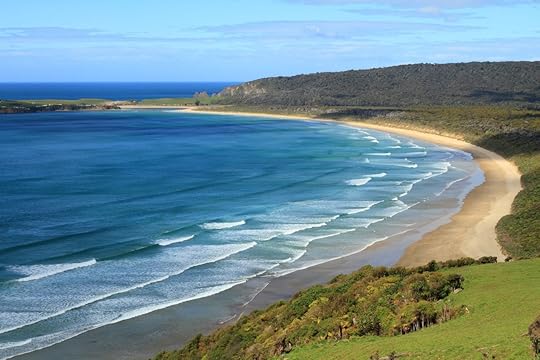
Photo: George Burba/Shutterstock
Following State Highway 1 south from Kaikoura, there’s no shortage of beaches you can visit all the way down to The Catlins region — at the bottom of the South Island — and then back up again the west side. Traveling along the perimeter of both main islands, you’ll have your pick of both well-trodden and overlooked shores, and be sure to make some time for the latter along the way. Some of those seemingly boring towns might surprise you.
However, not quite so far south, but just an hour north of Christchurch, Amberley is a town that most travelers tend to plow through en route to the South Island’s largest city, but it’s a welcome diversion from the worn path. Stroll along empty trails, pet a dog taking its owner for a walk on the beach, and read a book against the lull of waves.
Near Wellington

Photo: Ed Goodacre/Shutterstock
In Wellington, at the North Island’s south end, travelers can take a dip in the sea without sacrificing a night in the country’s capital. Take a bus to Scorching Bay or Lyall Bay, two easy journeys from the city, before you head back to check out Wellington’s nightlife. If you’ve got a car, make a day trip to Castlepoint, where you can visit both a lighthouse and sandy shores. For spur of the moment “beach” trips, you can even jump in from the docks of Wellington Harbour and relax in view of Oriental Bay and its sky blue boathouses. 

More like this: Raglan, New Zealand, is the coolest surf town you’ve never heard of
The post Where to find New Zealand’s most heavenly, and often empty, beaches appeared first on Matador Network.

Black Moon on July 31

Having two new moons occur in a single month only occurs every 32 months — and that’s exactly what’s happening on July 31.
Since there are 29.5 days between new moons, it sometimes happens that they both fall during the same month. In this case, the second of July’s new moons will be at the very end of the month on July 31.
A new moon is when the moon passes between planet Earth and the sun and is not visible from Earth. The moon appears dark to us Earthians because the side that’s lit by the sun at that time faces away from us.
Even if you missed the darkness of first new moon, you can still catch the one on July 31 to stargaze or even go night hiking away from light pollution.
But that’s not the only day that’s ideal to look up at the heavens. According to NASA, there will be a “super moon” on August 2 (when the moon will be closest to Earth for this orbit and therefore appears larger to us) and perseid meteor in the early morning of August 13. 

More like this: The next 10 total solar eclipses around the world
The post July will have its second new moon on the 31st, making it the best month of the year for stargazing appeared first on Matador Network.

July 24 busiest air travel day

Wednesday, July 24, was one of the busiest travel days ever recorded with over 225,000 flights operating. According to Flightradar24, a real-time air-traffic-tracking service, this was the first time it had ever tracked that many aircraft in the skies on a single day, including personal aircraft, cargo planes, commercial flights, helicopters, private jets, gliders, and sightseeing flights. Most military flights, however, are excluded since they can’t be tracked.
The photo below is a staggering representation of every flight in the air on July 24.
Yesterday, we tracked over 225,000 flights in a single day for the first time. Follow more than 20,000 flights right now at https://t.co/A4mWRJu9Vi. pic.twitter.com/Pxh21WiAy3
— Flightradar24 (@flightradar24) 25 juillet 2019
The service has only been tracking flights since 2006, though it’s unlikely that this number would have been surpassed prior to that date given the increase in aircraft volume in recent years. But however impressive this record may sound, it probably won’t stand for very long. Ian Petchenik, who manages media and community relations for Flightradar24, told Business Insider that the record will likely be broken a few more times this year, or even possibly later this week, as the summer months are peak travel periods. 

More like this: The 7 most frustrating airports around the world
The post July 24 was one of the busiest air travel days in history appeared first on Matador Network.

How to learn Thai

Hanging out with fellow travelers on the beach, Khao San Road, or at Full Moon parties is one of the joys of visiting Thailand. However, if you want to have a more profound experience and take part in adventures unavailable to most visitors, then you should learn to speak some Thai. The language, with its seemingly curlicue letters may look difficult at first glance, but with language apps, Youtube videos, and lessons via Skype, learning Thai is actually quite easy, and it’s highly recommended and possible to learn the language before setting foot in Southeast Asia.
Why you should learn Thai

Photo: puwanai/Shutterstock
You’ll make friends with the locals.
The number one benefit of learning Thai is the ability to meet and communicate with local people. If you want to explore the less-visited sides of Bangkok, remote beaches in the south, or the countryside of the north, Thai language skills are essential to getting the most out of the experience. Away from the touristy areas, English is almost non-existent, but the people are friendly and curious. Travelers who make an effort to use Thai are likely to get invited to drink a beer, share a meal, or go to a festival — speaking Thai can literally open doors in the Land of Smiles.
You’ll get the best grub.
Although many restaurants have English menus, if you want the tastiest Thai food, and save some baht in the process, being able to speak Thai is the key. The most delicious food in Thailand is often found at street carts or in hole-in-the-wall restaurants that appear intimidating to tourists. Learn how to read the names of the dishes, and the amazing food will be there for the taking.
Amazing street food is everywhere in Bangkok, but some of the best places to eat with the locals include the Nang Loeng Market, the Victory Monument, and Silom Soi 20. The Nang Loeng Market is a large food court in a neighborhood of traditional shophouses about a 20-minute walk from Khao San Road. The busy Victory Monument is a transportation hub frequented by locals on the go. The boat noodle shops on the northeast side of the roundabout are an excellent place to start. Silom Soi 20 is a narrow street lined with inexpensive food stalls that is a great escape from the expensive restaurants of the area.
You’ll avoid hassles and scams.
Two of the biggest scams in Bangkok are tuk-tuk drivers who take passengers to shops and pressure them to buy, and taxi drivers who try to avoid using the meter with tourists. By using your language skills to negotiate and clarify the destination in advance, you can prevent these problems. Also, in downtown Bangkok and the touristy beaches, you may get approached by unscrupulous touts or con artists offering tours or services. Tell them, “Ma jak Khrueng Tep,” I am from Bangkok, and they will laugh and retreat like a vampire exposed to garlic.
Basics of the Thai Language

Photo: 9’63 Creation/Shutterstock
Thai poses challenges to English speakers:
There are almost no shared words between the languages.
In Thai, the personal pronoun “I” is gender specific. Women say chan, men say pom. In addition, Thai women usually end each sentence with kha and men end the sentence with khrap to make it softer and more polite.
The written Thai language uses a unique script that looks nothing like the Latin alphabet. But once you know the letters, what you previously thought were squiggles will make perfect sense.
Thai has five tones: mid, high, low, rising, and falling — and how you say a word can change its meaning. It is important to learn the tones and try and use them correctly so that people will understand, but often they can infer by context. For example, sua with a rising tone means tiger, and sua with a falling tone means shirt. If you go to a laundromat, chances are the clerk will understand that you don’t want to clean your tiger.
Luckily, Thai is a simple and straightforward language. There are no articles or plurals, and the verbs never change form. For example, In English, we say, “I went to the beach yesterday.” In Thai, they say, “I go beach yesterday.”
Learning Thai — Where to start
A great first stop is iwanttolearnthai.com, a website by Bo, a Thai language teacher. The site has audio, video, and written lessons, plus a collection of vocabulary lists. There is also a section entitled Speak like a Thai with 365 useful lessons — one for every day of the year.
Another essential website is thai-language.com, which has the best Thai translator and dictionary on the web. Each word has a page with sentence examples, synonyms, and antonyms. The translations on the webpage are 100 percent accurate. The thai-language.com app is a handy tool to have on your phone to look up words on the fly.
Some additional websites, podcasts, apps, youtube channels, and books to learn Thai with ease include:
Mod
Mod has over 100 videos that teach practical tips to tourists, including how to give directions to a taxi driver and vocab for Thai massage. Of course, you can always scream “OUCH” during your treatment and be understood, but to say it in Thai may lead to quicker relief.
Thai Pod 101
The Thai Pod 101 website has over 1,000 lessons, and the YouTube channel has over 450 free videos that focus mostly on conversation and vocabulary building.
Nemo
Nemo is a fun and useful app designed for use during small periods throughout the day. The app has audio and written vocabulary lists and a recording function that allows you to record and hear your voice next to that of a native speaker.
Thai for Beginners by Benjawan Poonsam Becker
If you prefer learning on paper books, Thai for Beginners by Benjawan Poonsam Becker is the best on the market; the book teaches reading, writing, and conversation in an easy-to-follow manner.
Skype
Learning with a native speaker via Skype before you come to Thailand is not only cheap but also one of the most effective ways to learn. By using Skype, you get one-on-one instruction and don’t have to travel to a classroom to study. When conversing with a teacher on Skype, it is possible to share screens, send photos, and quickly look up words in online dictionaries. Plus, you can record the lesson and review it later.
Finding an online Thai teacher is simple. The best place to start is italki.com, which has a listing of Thai teachers with promo videos and prices. Learn Thai Style is another language program that connects Skype teachers to students.
If you want to save money or want supplemental speaking practice, consider arranging a language exchange with a Thai person. In a language exchange, you can meet via Skype and spend the first half of the time speaking Thai, and the second half speaking English. A language exchange will be different in that you won’t have a teacher, but it is a free option for those looking to practice speaking. Facebook groups such as Bangkok Expats or Everything Bangkok are an excellent place to look for interested locals.
Speaking Thai in Thailand

Photo: David Bokuchava/Shutterstock
Once in the country, dive in and start speaking. Don’t worry about making mistakes or saying everything correctly — Thai people are easy-going and happy that you are trying. Your efforts will most likely be rewarded by “Pud Thai gang mak!” (You speak Thai very well!)
Two phrases that will get you far while in Thailand are “hello” and “thank you.”
“Hello” for female speakers — Sah-wah-dee kha
“Hello” for male speakers – Sah-wah-dee khrap
“Thank you” for female speakers — Khàawp-khun kha
“Thank you” for male speakers — Khàawp-khun khrap
Thai people are mostly incredibly social and open, and often ask the same questions. Learn and rehearse the answers to these questions to make small talk easy.
Where are you from? — Kun ma jak yuu tee nai?
Are you married? — Kun deng-ngan leow reu yang?
Do you have children? — Kun mee luk mai?
Where are you traveling in Thailand? — Kun dtuen-tang bai nai?
What are your favorite Thai foods? — Kun chop a-han Thai arai?
Do you like spicy food? — Chop a-han pet mai?
The weather is hot, right? — Ron, chai mai?


More like this: The best place to go in Thailand for every type of traveler
The post Learning Thai is easier than you think. Here’s why you should do it. appeared first on Matador Network.

July 25, 2019
Alaska’s Tordrillo Mountains

Skiing in June isn’t what you would expect for a dream trip to Alaska. But the Tordrillo Mountains are full of unexpected experiences. While skiing was our priority, little did we know that we would remember all the other experiences just as much — SUPing under the midnight sun, casting for rainbow trout, wake-surfing on Judd lake, and just being out in the wild Alaska wilderness. It all combined into an experience like none other. 

1
Our goal was to ski perfect summer “corn” snow with the backdrop of the immense Alaska wilderness. We took helicopters to reach the peaks of the stunning range that formed the backdrop to the Tordrillo Mountain Lodge. Amie Engerbretson, a professional skier who has traveled the world skiing, said these mountains are some of the best she has ever skied in.

2
Corn skiing or snowboarding is a magical experience. At night the snow freezes. By day, as it slowly melts, the top layer becomes the ideal consistency for skiing. There’s a perfect few-hour window where that top layer makes skiing a joy to slide on. Before that window it’s too firm, and afterwards it becomes sticky and sloppy. You can chase that prime time with the angle of the mountains, since the sun is what mostly affects the snow.

3
The backdrop of endless mountains was unreal. There’s plenty of terrain for any type of skier. Of course Amie sniffed out some steep skiing. One of the nice parts of skiing in June is that avalanche danger is incredibly low also. Also nice is that with such warm temperatures, you don’t really need normal outerwear. You could ski in a t-shirt some days.
Intermission
News
Fellow chefs declare June 25 ‘Bourdain Day’ to honor their late friend
Eben Diskin
May 30, 2019
News
This Maldives resort is hiring an intern to look after its turtles
Eben Diskin
Jun 4, 2019
Outdoor
How to do an incredible backcountry hut trip through Colorado
Katie Botwin
Dec 14, 2018

4
The Tordrillo Mountain Lodge lies on a peninsula in Judd Lake. Even if it's too cloudy to helicopter into the mountains and ski, there is more than enough to keep you occupied. Here Amie is wake-surfing in a dry suit - and smiling.

5
We walked on the bottom of a lake that sits between two glaciers. The bottom glacier freezes and plugs up the water to form the lake. The upper glacier sheds its massive ice blocks, which float in the lake. At some point in the summer, the bottom glacier melts out enough for the lake to drain -- leaving the massive ice blocks at the bottom of the dry lake. We flew the helicopter to this spot and wandered around gawking at all the beautiful ice formations.

6
There are plenty of waterways in the Tordrillo Mountains. King salmon fishing is the prize, but this year king salmon fishing was closed. But there were plenty of rainbow’s, graylings, and other salmon to chase.

7
It helps when you have a helicopter to bring you to the perfect fishing holes. We were able to choose from rivers and streams that had plenty of fish but no other anglers. There were endless amounts of waters to fish.
Intermission
News
Woman finds guns, typewriter made of human teeth, and more behind locked door in Airbnb
Matthew Meltzer
Jun 12, 2019
Sponsored
7 kid-friendly Idaho adventures for your next family vacation
Todd Holcomb
May 29, 2019
Sponsored
13 gorgeous images of what puts the ‘green’ in Greenville, SC
Jacqueline Kehoe
Jun 17, 2019

8
With light that lasted 24 hours, we were able to pack a lot into a few days. Amie and our guide Steve Hall show off a beautiful rainbow trout they caught at midnight.
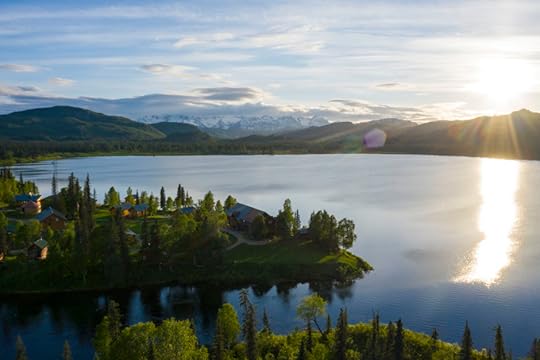
9
The Tordrillo Mountain Lodge is a 45-minute beaver plane flight from Anchorage. The only way in is by a plane that can land and take off on water. The lodge, lake, rivers, and mountains had all the ingredients for an amazing Alaska adventure.

10
We enjoyed five-star dining at the lodge - with ultra-fresh Alaskan seafood, seasonal game, and local produce and herbs from the lodge’s own garden. Even with all the activities, we came home a few pounds heavier.

11
After dinner was also a great time to just soak up the final hours of sunshine and enjoy the natural beauty. Here Amie is enjoying the calm water on a stand-up paddleboard just out front of the lodge. The hardest part of the whole trip was stopping. With the best sunsets around 1:00 AM and 24-hour light, sleeping was the last thing on a long list of fun.

12
The Tordrillo Lodge had a hot tub and a hot sauna, which you could follow with a cold jump in the lake. This is the perfect way to fix some sore legs after a day of skiing. Does it get any better than this?

More like this: How to explore the breathtaking fjords of Alaska’s Kenai Peninsula
The post The most incredible summer skiing and fishing trip to Alaska’s Tordrillo Mountains appeared first on Matador Network.

Treat and prevent altitude sickness
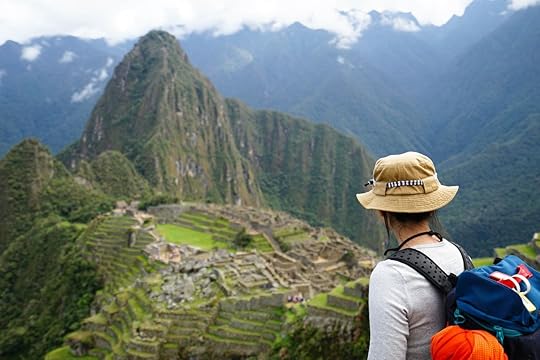
Few things ruin a session in the outdoors faster than a splitting headache. Toss in a bit a nausea and dizziness, and you’ll be spending the day bedside in the hotel room while your crew bags a peak without you. Many who come from low elevation to places like Colorado or Montana, and even people from higher altitudes who venture into the high alpine, are familiar with the symptoms of acute mountain sickness, or AMS. But new research provides insight into what you can do both before you travel and while at high elevation to prevent or at least minimize the condition.
In its recent report on acute altitude sickness published in the Wilderness and Environmental Medicine journal, the Wilderness Medical Society outlines its latest findings on how to prevent and treat the condition. The full report is about as entertaining as watching a silent movie with your eyes closed, so here are the basics distilled for easy reference.
Know your mountain sickness specs.

Photo: Tappasan Phurisamrit/Shutterstock
The Wilderness Medical Society defined four types of mountain sickness in its report. The first, AMS, occurs when you ascend rapidly to an elevation that your body isn’t used to. Chronic mountain sickness, on the other hand, affects people who live at high elevation.
The two other types are more critical conditions that can evolve out of extreme cases of AMS. High-altitude cerebral edema (HACE) is an extreme form of AMS wherein the person experiences extreme dizziness to the point that even standing up straight is a tall order. High-altitude pulmonary edema (HAPE) happens when damaged capillaries leak fluid into the lungs, a rare but extremely serious condition that can be fatal if not treated promptly. Both necessitate medical treatment and are cause for an immediate descent from the mountains.
It’s less common to experience altitude sickness below 6,500 feet. In general, AMS, which is the main focus of the report, affects the average mountain climber once they hit 8,200 feet. Here are the basics you need to know before a high-altitude trip:
The air is thinner at altitude, meaning your body has to breathe harder to meet its needs, and AMS occurs when the body doesn’t react well to this. Common symptoms include dizziness, light to moderate headache, and, if your stomach is on the weak side, a bout of vomiting.
Dehydration is only going to amplify these signifiers, so drink plenty of water and keep yourself well-fed because mountain climbing burns calories at a rapid rate. AMS is no fun to deal with, but in itself is generally not cause for major concern beyond treating, resting, and adjusting, and potentially descending in you’ve worked your way up a mountain.
In general, AMS is the primary threat for hikers, climbers, mountain bikers, and other relatively fit travelers ascending into the mountains, and the symptoms will recede once your body adjusts to the thinner air.
The risk of getting AMS varies greatly by individual. If you have experienced symptoms of AMS before and ascend to above 9,100 feet in one day, your risk increases greatly, while it is lower for those who have never had symptoms or who allow one-two days to adjust. Anyone ascending to above 11,400 feet in one day runs a high risk.
What to do when you have symptoms of acute mountain sickness

Photo: Rosliak Oleksandr/Shutterstock
According to the report, the first thing to do once that headache or nausea kicks in is to stop climbing and rest. This might seem like an obvious statement, but when you’re out in the field with a group of people and you’re the only one feeling sick, the temptation to just suck it up and keep going tends to creep in.
When this happens, remember one of the key pillars of backcountry travel: the consensus of the group is driven by the weakest link. While no one wants this to be their descriptor, the intention is that the group operates as a whole and thus when someone is feeling ill, the group must accommodate. There’s no shame in needing to take a pause. Additionally, follow these steps:
If rest doesn’t cut it, the WMS recommends descending 1,000 to 3,000 feet.
Tylenol and Ibuprofen can be effective in countering the headache but should be taken in addition to the prior steps, not in place of them. The report cites that 600 milligrams of Ibuprofen taken three times per day is more effective at combating AMS than doing nothing.
Acetazolamide, commonly sold as Diamox, was also cited by the report as being an effective combattant. For optimal results, begin taking Diamox the day before you ascend to higher altitudes and continue until two days after you finish.
Also noted is the practice of chewing coca leaves, common among South American mountaineers, farmers, and others who spend ample time working at high altitude. (If you’re hiking in the Andes, you may be able to purchase coca leaves or coca leaf tea.)
Dexamethasone and ginkgo biloba, available in over-the-counter soft gel tabs, can be effective agents in warding off the symptoms, as well.
Steps to prevent altitude sickness
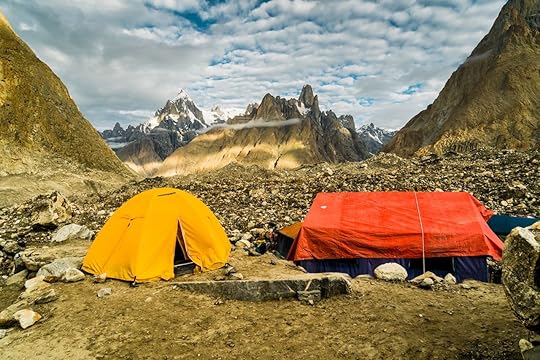
Photo: Michal Knitl/Shutterstock
Acclimatization is king when it comes to proper planning and preparation for a high altitude ascent. This should take multiple forms, beginning with allowing a full day for your body to acclimatize to an elevation slightly higher than you’re used to:
If you live at sea level, try spending the first night in a city or town at the base of the mountains before you begin your ascent, and allow 24 hours to adjust.
If you’re traveling to trek in the Himalayas, spend a night or two in Kathmandu, elevation 4,592 feet, before taking off on your trek. Going skiing in Colorado? Spend a night at 5,280 feet in Denver before driving up to Summit County.
If you’re undertaking a multi-day trek or climb that steadily ascends in altitude, the study recommends allowing periodic rest and acclimatization days. “Above an altitude of 3,000 meters [about 10,000 feet], individuals should not increase the sleeping elevation by more than 500 meters [1,600 feet] per day and should include a rest day (ie, no ascent to higher sleeping elevation) every three to four days,” the report said.
A portable oxygen cylinder can help to offset the lack of oxygen you’re breathing from the thinner air.
Among the clearest recommendations is to climb up the mountain slowly. Even if you’re a trail runner who spends a lot of time in the high country, ascending to an elevation higher than what your body is accustomed to should be done at a slow pace.
“Controlling the rate of ascent, in terms of the number of meters gained per day, is a highly effective means of preventing acute altitude illness,” the report notes. As noted above, at elevations above 10,000 feet, try to keep your ascent to no more than 1,600 feet per day.
But even more important is the altitude at which a person sleeps. Because you will spend multiple hours at the same elevation overnight, it’s critical that you plan your ascent so that your body can be properly adjusted before you hit the hay.
“The increase in sleeping elevation should be less than 500 meters [1,600 feet] for any given day of a trip,” said the report. In cases where this isn’t possible, the use of a rest day becomes even more important.
Minimizing its impact while on the hill
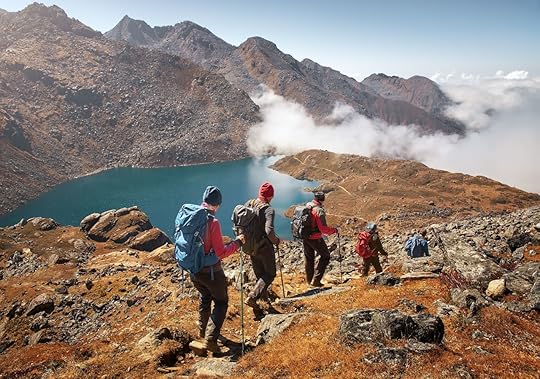
Photo: soft_light/Shutterstock
In general, you can minimize the effects of AMS symptoms by following the precautions we’ve listed here. But in the interest of safety and proper trip planning, follow these tips:
Lest we forget the importance of water: Pack it. Drink it. And then drink more of it.
Get yourself a water filter from an outdoors store such as REI — the best for high altitudes is Life Straw because you can pull water from flowing streams and other sources quickly and safely in case your personal supply runs out.
On the gear front, run through this list of basics to ensure you’re properly prepared.
When climbing, keep your head down to the mountain as much as possible. This minimizes vertigo-induced nausea.
Alcohol furthers dehydration, whether you’re at sea level or 12,000 feet. So while summiting a peak is a revelrous accomplishment, maybe wait until you’re back at the trailhead to crack open that celebratory beer.


More like this: How to prepare for a high altitude trek
The post New report shows the best ways to prevent altitude sickness appeared first on Matador Network.

Amalfi Coast travel tips
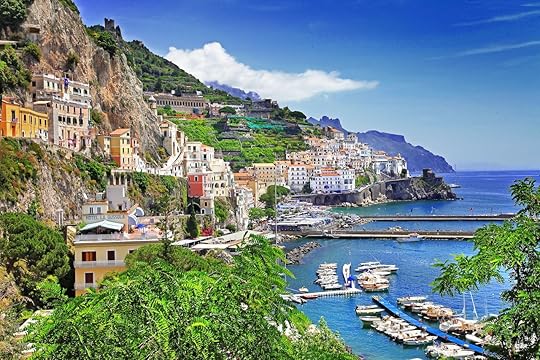
One of Italy’s most popular destinations for international travelers and a UNESCO World Heritage site, the Amalfi Coast is one of the most stunning corners of Earth. However, considering that its relatively small geographic size and limited infrastructure currently serve five million annual visitors, the coast’s ever-growing popularity poses challenges for tourists, particularly during high season. Experiencing the rocky coastline is more than worth working your way along the SS163 Highway that links Amalfi’s 13 coastal towns, though proper research and planning are essential if you don’t want to spend the majority of your day lining up to actually see, eat, or do anything. If you’re planning on visiting, here are a few tips to keep in mind to make the most of your trip.
1. Visit in September or October… or pretty much anytime besides May through August.

Photo: Marion Carniel/Shutterstock
Seriously. Not only is it expensive AF during the late spring and summer, but the coast’s population is bursting at the seams, and you will spend a frustrating part of each day and night standing in lines (for buses, taxis, boats, restaurants, and shops), getting constantly jostled by crowds and selfie-takers. Early autumn is optimal. Families have departed the area by September, the Salerno Gulf is delightfully warm, and restaurant and hotel reservations are more bountiful and easier to come by. The winter months are the least crowded, but as such, some restaurants are closed and you won’t find the nightlife or block festivals common during drier months.
2. Do not drive.
There is essentially one thoroughfare on this 60-kilometer stretch of Campania’s coastline between Sorrento and Salerno. It is a twisting, two-way, cliff-edge road with blind curves and ultra high stakes the entire way. At points, the road is so narrow that oncoming buses often have to stop and reverse to let approaching vehicles pass. Plan on taking the public bus (see below) or arrange taxis or ferries in advance.
3. Be flexible with the bus schedule.
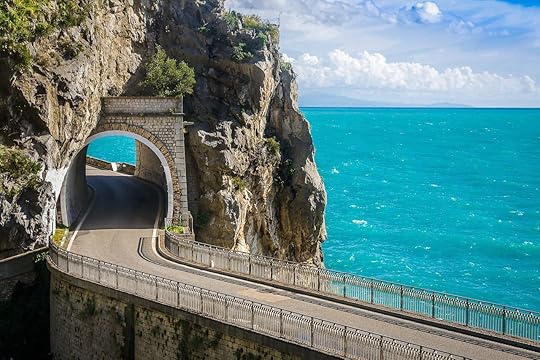
Photo: Pfeiffer/Shutterstock
Due to the aforementioned limitations and challenges of the route, the public bus schedule is sometimes virtually useless. It is not unusual for buses to show up 20 minutes before or after the scheduled time or, if you are visiting in late spring or summer, to roll right by because they are already overloaded with passengers. Plan your routes via the SITA Bus website, but allow for flexibility. There’s always a nearby Limoncello with your name on it if you need to pass some time.
4. Prepare to shell out a lot of dough for taxis.
Fares are based on the number of people in your group and, due to the necessity of traveling through this part of Italy via motorized vehicle and the fact that there aren’t many roads, prices are absurd. Don’t be surprised if you dish out 80 euros for a one-way, 20-minute drive. Consider booking one driver for the whole day on a flat rate if you’re planning on sightseeing.
5. Take a hike.

Photo: Francesca Sciarra/Shutterstock
One of the most pleasant ways to take in the beauty of the coast is to travel off-road on foot. The most famous hike on the Amalfi Coast is the Sentiero delle Dei (Path of the Gods), which links Positano to the high cliff town of Agerola, taking you up nearly 2,000 vertical feet in about eight kilometers on lots and lots of ancient staircases. You can hike from the town of Amalfi to Ravello, also wandering up steep, stone staircases through lemon groves and lush foliage with sweeping views of the coast. Another option starting in Amalfi is the Valle delle Ferriere path, which will take you up to the main square of San Lazzaro past glorious waterfalls. Vigorous hikers can reach what is arguably the highest point on the coast by starting in Agerola (the high point of the Path of the Gods route) and trekking 1,000 feet upward to Monte Tre Calli, from where you can see the sprawling gulfs of Sorrento, Salerno, and even Mt. Vesuvius.
6. Visit the smaller, non-touristy towns.
To truly get a flavor of the area, visit Maiori, Minori, Scala, or Conca dei Marini, each of which plays a vital role in the history of the coast and will provide plenty of opportunities to practice your Italian. Conca dei Marini is particularly alluring since it has its own tiny beach (hit it in the morning before the shade falls in the afternoon) and one of the most delightful and reasonably priced restaurants on the coast, La Bonta del Capo.
7. Visit Pompeii first thing in the morning.
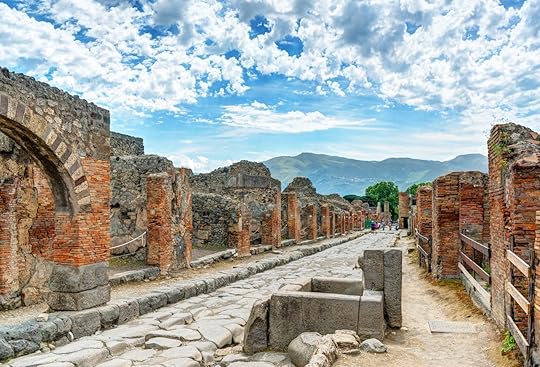
Photo: Viacheslav Lopatin/Shutterstock
You might have to jockey for the best viewing spot of the 2,000-year-old pornographic mosaics with a pack of schoolchildren on any given weekday, but you will be happier making this not-to-miss day trip from the coast if you plan to arrive right when it opens at 9:00 AM before cruise ship crowds disembark and field trips arrive. Another necessity for Pompeii is to download a guide app before you visit. If not, you’ll be clueless, since the brochure that comes with your ticket is simply a map with Roman numerals marking vague locations, and the audio guide available at the ticket window isn’t that great. Signage and information throughout this fascinating, once-buried ancient city is mysteriously non-existent, so to best appreciate what you’re looking at or to know anything about it, download an offline guide and map (Discover Pompeii is a good one) before you arrive.
8. Shop around for souvenirs.
The exact same ceramic lemon ornament you saw in Amalfi for seven euros could very likely be 13 euros in Positano. Like any teeming tourist destination, you’ll see the same trinkets everywhere, but along the coast, prices can vary significantly. Take note of price tags and wait until you find the best buy to avoid getting ripped off.
9. See the coast from a boat or kayak.

Photo: Elena Arrigo/Shutterstock
Yes, it can be pricey, particularly if you spring for a private vessel, but well worth it to get a pirate’s eye view of the jagged and colorful coastline. Seeing the coast from the water is a magical, full-circle experience. You can rent smaller boats like a Zodiak or a generic motorboat yourself and take it out and save some dough, but opting for a guided trip provides the full experience as you’ll hit the best spots and learn a few things along the way. Try Gianni’s Boat Tours or Exclusive Cruises for motorized options and Amalfi Kayak if you’re up for an arm-powered adventure.
10. But watch out for jellyfish.
There is an infestation all along the coast, so if you venture into the water, keep a sharp eye out for these pinkish blobs that sting like hell. The word for jellyfish in Italian? “Medusa.” That says it all.
11. Find a quiet(er) beach.
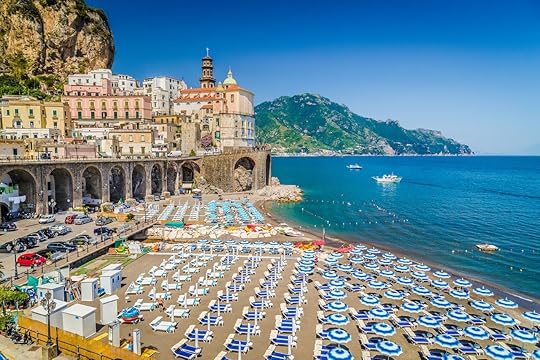
Photo: canadastock/Shutterstock
The main beaches in Amalfi and Positano tend to get packed, but if you wander 10 or 15 minutes afield, you’ll be rewarded by a piece of sand (or, more realistically, pebbles) to call your own where lounge chairs aren’t 25 euros a pop, and the vibe is generally a lot more chill. Atrani Beach lies just east of Amalfi and Fornillo Beach just west of Positano. If hanging on the beach is the number one plan for the day, hit Maiori, Erchie, or Vietri Sul Mare, which has actual sand. 

More like this: How to see the Amalfi Coast by motorcycle
The post 11 things you need to do to get the most out of the Amalfi Coast appeared first on Matador Network.

Flight deals in August and Labor Day

Sometimes, you’re minding your own business, strolling through Target because you needed to pick up some Tide pods, and all of a sudden something stops you dead in your tracks. Right there between home goods and garden tools there’s a giant display of electric food dehydrators, marked down 75 percent. Not that it had ever occurred to you to buy an electric food dehydrator. You’re not even sure exactly what an electric food dehydrator does. Something with jerky, probably. But it’s 75 percent off — you really can’t afford not to buy it. And the next thing you know you just dropped $241 when all you went to get was laundry soap.
August flight prices are going to be a little like that, minus the excessive amounts of dried meats. Some cities around the globe — and some far-flung domestic destinations — are gonna have flights so deeply discounted, you’ll kick yourself for not buying them. How do we know? Because our friends at Skyscanner said so, after they examined literally millions of historical flight prices to find the spots where airfares will drop most next month. And boy did they find some bargains.
Inside the US, usually cost-prohibitive Honolulu has flights close to a hundred dollars cheaper than usual, down 14 percent to $553. You can catch the tail end of tourist season in Alaska, with flights to Anchorage down 13 percent to $448. If you’ve been scanning your friends’ bachelor and bachelorette party posts and thinking, “Gee, I oughta get out there some day,” August is your month too; Nashville has flights down 24 percent to $250, and Austin drops 25 percent 50 $221. The rest of the domestic deals:
1. Raleigh-Durham, North Carolina — $219 (27%)
2. Charlotte, North Carolina — $239 (25%)
3. Austin, Texas — $221 (25%)
4. Nashville, Tennessee — $250 (23%)
5. Honolulu, Hawaii — $553 (14%)
6. Anchorage, Alaska — $448 (13%)
7. Minneapolis-St. Paul, Minnesota — $243 (12%)
8. Philadelphia, Pennsylvania — $246 (10%)
9. Tampa, Florida — $230 (10%)
10. Phoenix, Arizona — $281 (10%)
But the big, crazy, I-never-thought-I’d-go-there-but-at-this-price-I-kinda-have-to discounts are going to be found flying outside the country. Sydney has flights cheaper than you’ll find to some US regional airports, down a staggering 35 percent to $753. Spain also boasts some unusually cheap flights for summer, with Madrid flights 24 percent less than usual at $541 and Barcelona down 19 percent to $540. Even the sticker-shock capital of Europe in Zurich is cheaper this month, with airfares down nine percent to $753. Though you’ll probably use up all the money you saved on your first cup of coffee. The rest of the international leaderboard:
1. Sydney, Australia — $753 (35%)
2. Madrid, Spain — $541 (24%)
3. London, UK — $558 (12%)
4. Barcelona, Spain — $540 (19%)
5. Manchester, UK — $690 (13%)
6. Punta Cana, Dominican Republic — $515 (13%)
7. Guadalajara, Mexico — $330 (11%)
8. São Paulo, Brazil — $871 (10%)
9. Medellin, Colombia — $503 (10%)
10. Zurich, Switzerland — $753 (9%)
Much like the usefulness of an electric food dehydrator, none of this is guaranteed. Though Skyscanner has been doing this for a long time, so your odds of saving money on airfare next month are a lot better than the odds of you using that dehydrator much past Labor Day. If you wanna take advantage, login to Skyscanner, let them search the prices for you, and book through whichever airline they find with the lowest price. Or kill time while you’re waiting for your food to dry going from site to site yourself — your call.
Saving by spending really can work. Maybe not always in the case of Target impulse buys but definitely in the case of astoundingly cheap airfares. So you can spend this fall expounding the virtues of dried apricot slices. Or talking about all the great tapas you had in Spain. How you choose to save is up to you. 

More like this: The best places to travel this September
The post Airfares to these cities are set to drop hard in August appeared first on Matador Network.

UK temperatures break July record

Last month Europe endured a heatwave that registered some of the hottest days ever recorded. But the oppressive heat isn’t over yet. In the UK, temperatures reached 100.6 degrees, which is the hottest ever recorded in July (the previous record was 98 degrees). Travel is even being disrupted with Network Rail reporting several heat-related incidents along the railway and potential downpours set to inconvenience travelers even more.
The Rail Delivery Group, which represents train operators and Network Rail, said that 20 of 26 train companies had been affected by cancellations and speed restrictions, particularly in London and the southeast of the country. “We believe there could be roll-on impacts tomorrow,” said Robert Nisbet, director of nations and regions at the group, “because many of the trains will be in the wrong places, many of the rail staff will be in the wrong place, and it will take time to re-set, to stabilize the timetable again. We could see disruption up until the weekend.”
Passenger Vivienne Tsui was forced to wait in unbearable heat before her evacuation from a train, due to a power shortage. “It’s been unbearable,” she told the BBC, “like a sauna. I had to get out of my seat because I felt like I couldn’t breathe.”
The heat has caused Great Western to cancel trains to London, Cardiff, and Swansea, and delays and cancellations are expected for trips on the Gatwick Express, Great Northern, Couthern, and Thameslink rail networks. Other railways are even advising people against traveling at all.
Since the UK is not used to such high temperatures, some people are in danger of heat exhaustion, with the NHS encouraging plenty of hydration. 

More like this: The 7 coolest lazy rivers in the world to beat the heatwave this summer
The post UK experiences hottest July day on record appeared first on Matador Network.

Matador Network's Blog
- Matador Network's profile
- 6 followers



